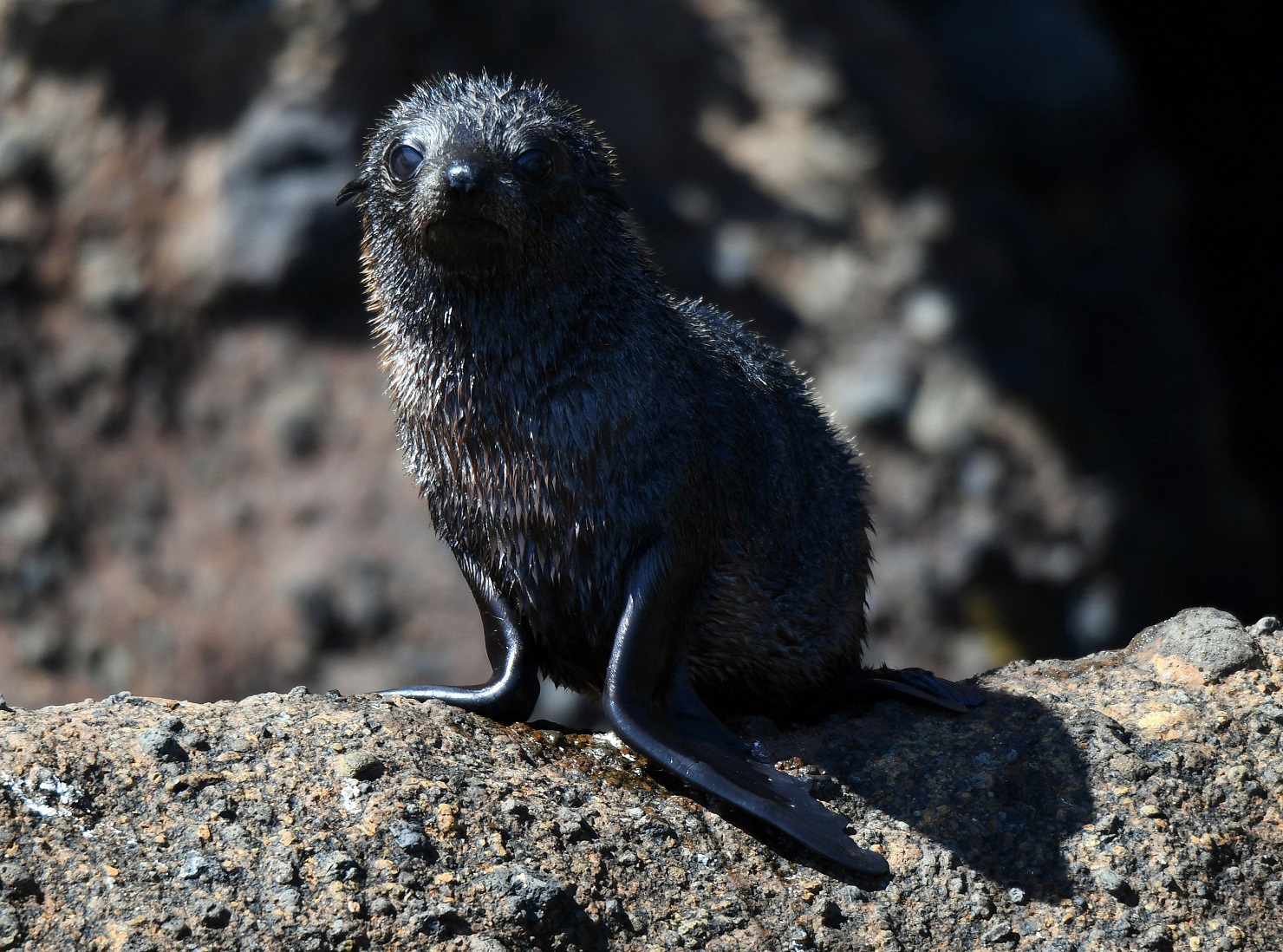
You’ll notice he didn’t say "There’s a lion here that we haven’t managed to shoot yet." Lions (and warthogs and monkeys and elephants) are his neighbours. And like good neighbours, people in Victoria Falls adjust their behaviour to accommodate the local wildlife. It’s the wildlife that brings in the tourist dollars, but also they are proud of living in a place with lions.
We used to have lions. Sea lions! Right here, all over Aotearoa, from Northland to Bluff and south to the subantarctic islands. Before people came, this was a land surrounded by fur seals and sea lions — millions of them. Māori arrivals killed and ate some of them. Later, among the very first Pākehā people here were sealers, who came to harvest their fur.
It’s hard for us to realise now, with our many warm fabrics, but seal skin was an essential back in the 1700s-1800s, used for hats, gloves and shoes. Seal oil was used for medicines, lighting and heating. A dead seal was worth serious money.
Predictably, in almost the blink of an eye, fur seals and sea lions became rare and then gone. Where did they go? They found refuge in the subantarctic islands — cold, wild, dark in winter — along with our other marine mammals the whales. And there they waited.

New Zealand fur seals (Arctocephalus forsteri) are found in both Australia and Aotearoa New Zealand. Layers of dense fur and fat keep them warm in the sea, where they dive deep in search of their squid and fish prey. They fish at night; during the day they hang out on sunny rocks. Once there were more than two million of them, but there are now 200,000; the population has rapidly increased since they were protected.
New Zealand sea lions (Phocarctos hookeri) are only found in Aotearoa New Zealand. They are unusual among seals because the females like to bring their young inland as much as 2km from the beach, to sand dunes and even into forests. This species is one of the rarest seals in the world. There are only about 12,000 of them left, mostly in the Auckland and Campbell Islands, and numbers are falling. Until recently, there were none left on the mainland.
Here in Otago we tell the story of "Mum", the brave sea lion explorer. Female sea lions usually return to the beach where they were born, but she was adventurous and almost single-handedly re-colonised the mainland starting in 1993. Her pups and their pups loll about on the wetlands along the road to Aramoana, blissfully unaware that they are reclaiming their lost whenua. There are now about 160 animals on the South Island.
But it’s not always a happy ending. Seals and sea lions are killed in nets, entangled or suffocated by plastic debris. Squid nets are particularly bad; in fact, the Ministry of Fisheries has an official mortality limit for sea lions — if it is exceeded then the squid boats have to come in. More females than males are usually entangled in nets and some years there just aren’t enough fish. Scientific population models have shown that fishing by-catch of sea lions, even within the limits, is not sustainable. Of course, it hasn’t been legal to shoot a seal in New Zealand since 1946, but that doesn’t stop some people. In urban areas they even get hit by cars. Warming seas, too, affect their wellbeing.
Sea lions, like their African namesakes, can be dangerous. They are unafraid of humans, faster than you think and if you get too close, or between a mum and her pups, you’ll be chased and maybe bitten. While that can be scary, all we really need to do is manage our behaviour a bit — adjust and give our neighbours some space. Doc recommends staying 10m away from them, and backing away slowly if you accidentally get too close.

Know Your Seals
The easiest way to tell Otago’s common seal species apart is when they are on land. Fur seals rest uncomfortably on rocks; sea lions lie on the sand. Fur seals have a pointy nose and are both slimmer and smaller than sea lions. The largest male fur seal reaches 2.5m and 150kg, whereas a large male sea lion can be up to 3.5m long and weigh 450kg.
Fur seals and sea lions are "eared seals", one of three groups of pinnipeds. The other two groups are "true seals" (no ears and no hind legs), of which you might see a visiting leopard seal or elephant seal on the Otago coastline.
The third seal family is walruses, which have never been found here.
Abby Smith is a professor of marine science at the University of Otago.












